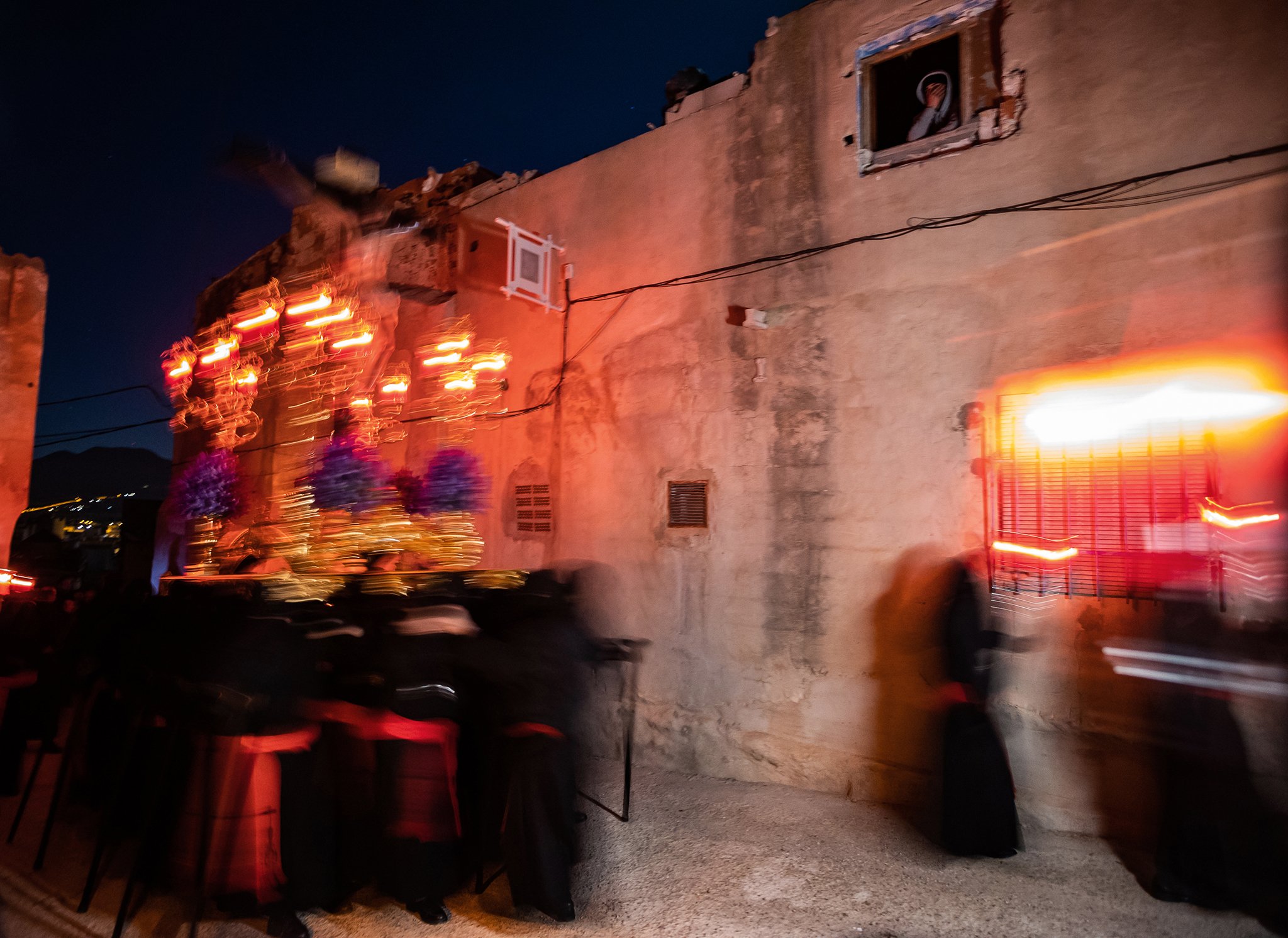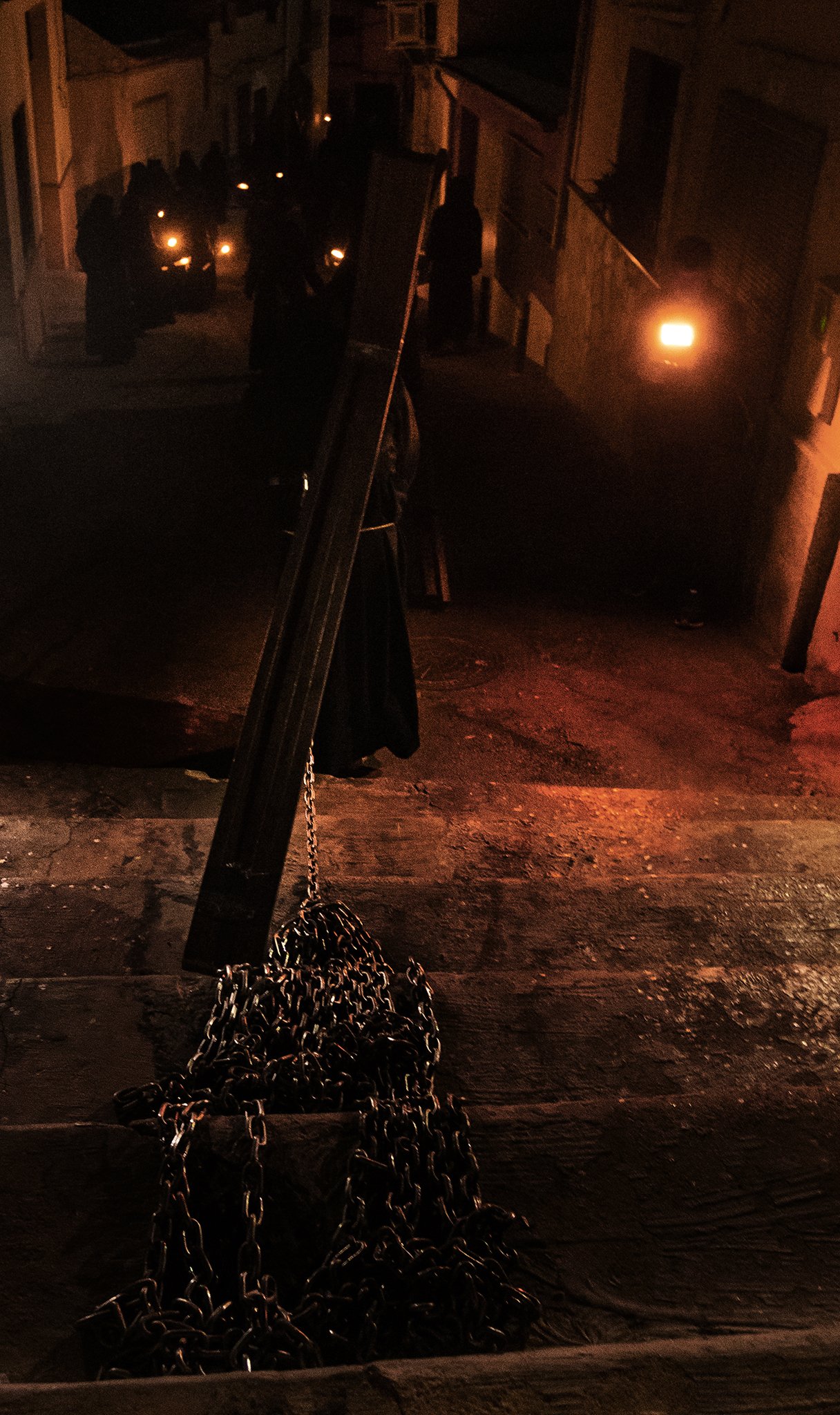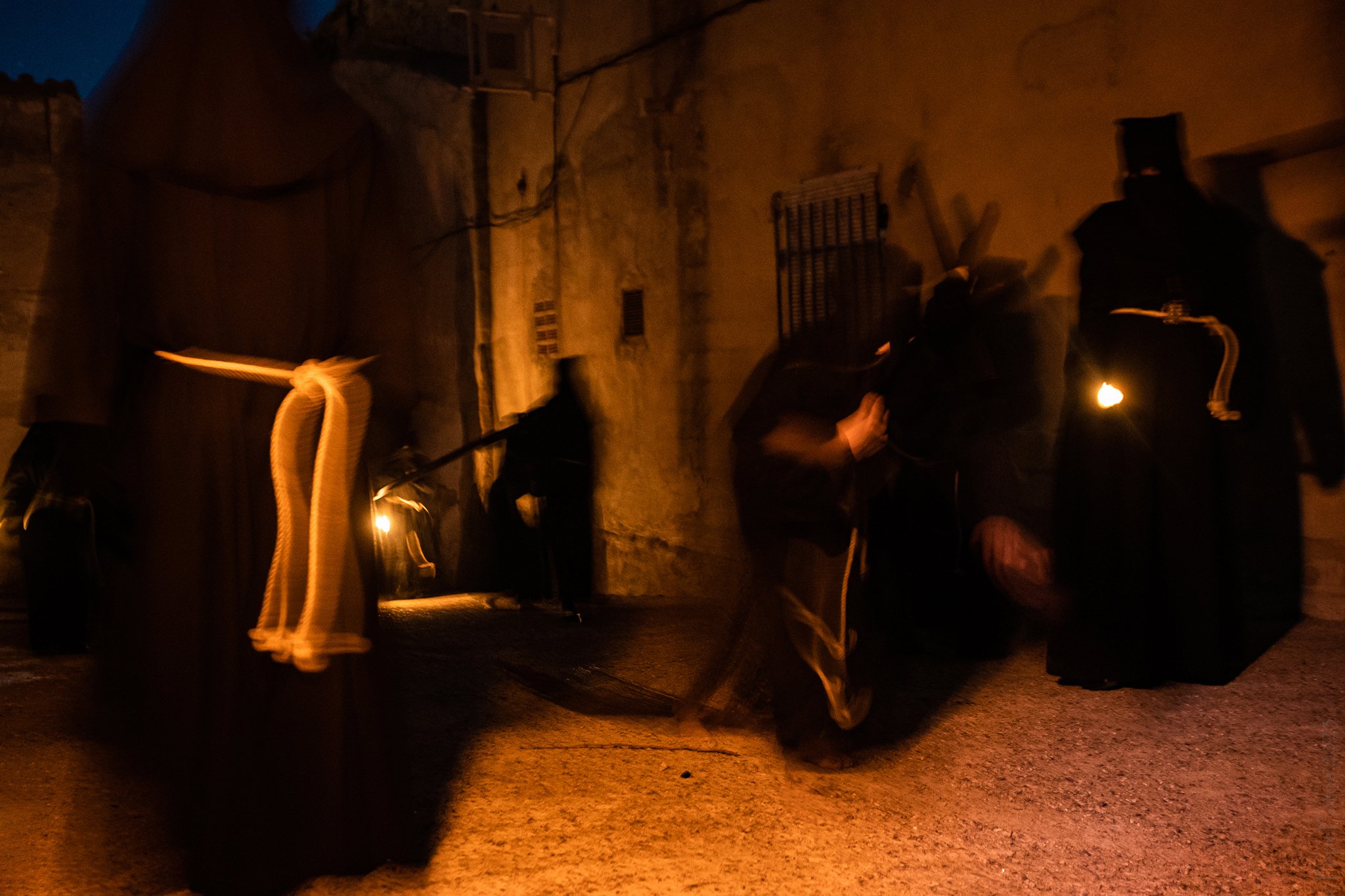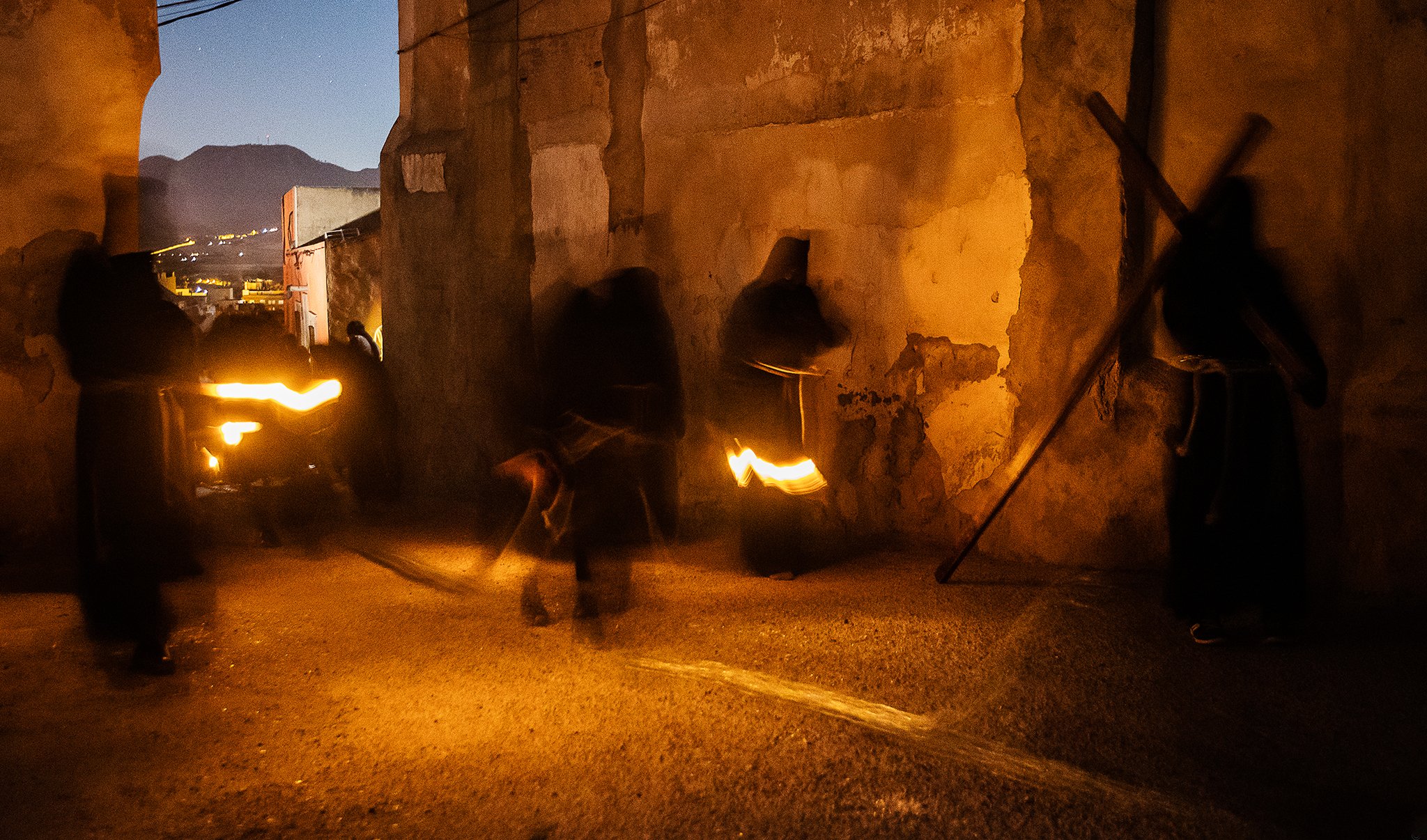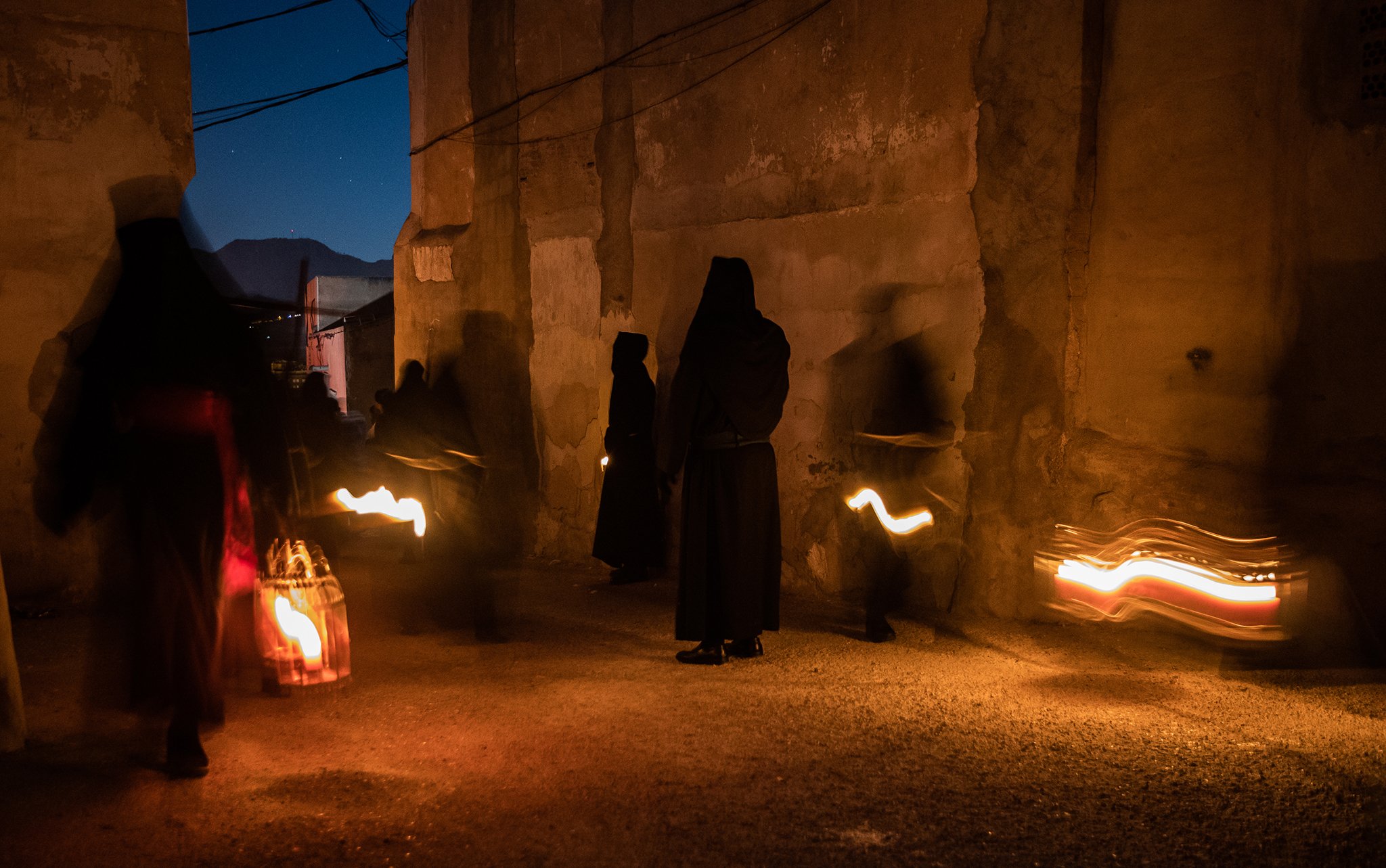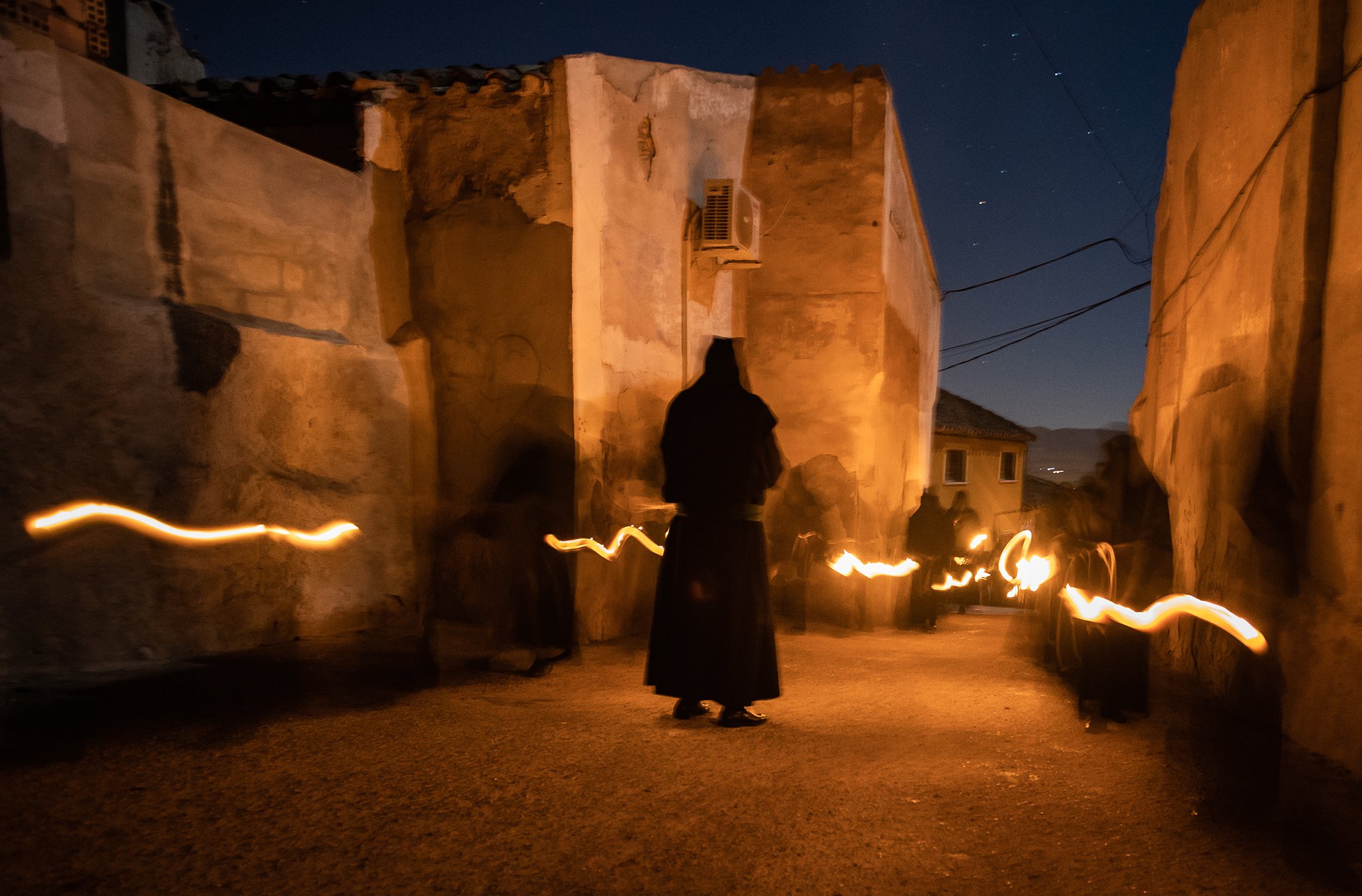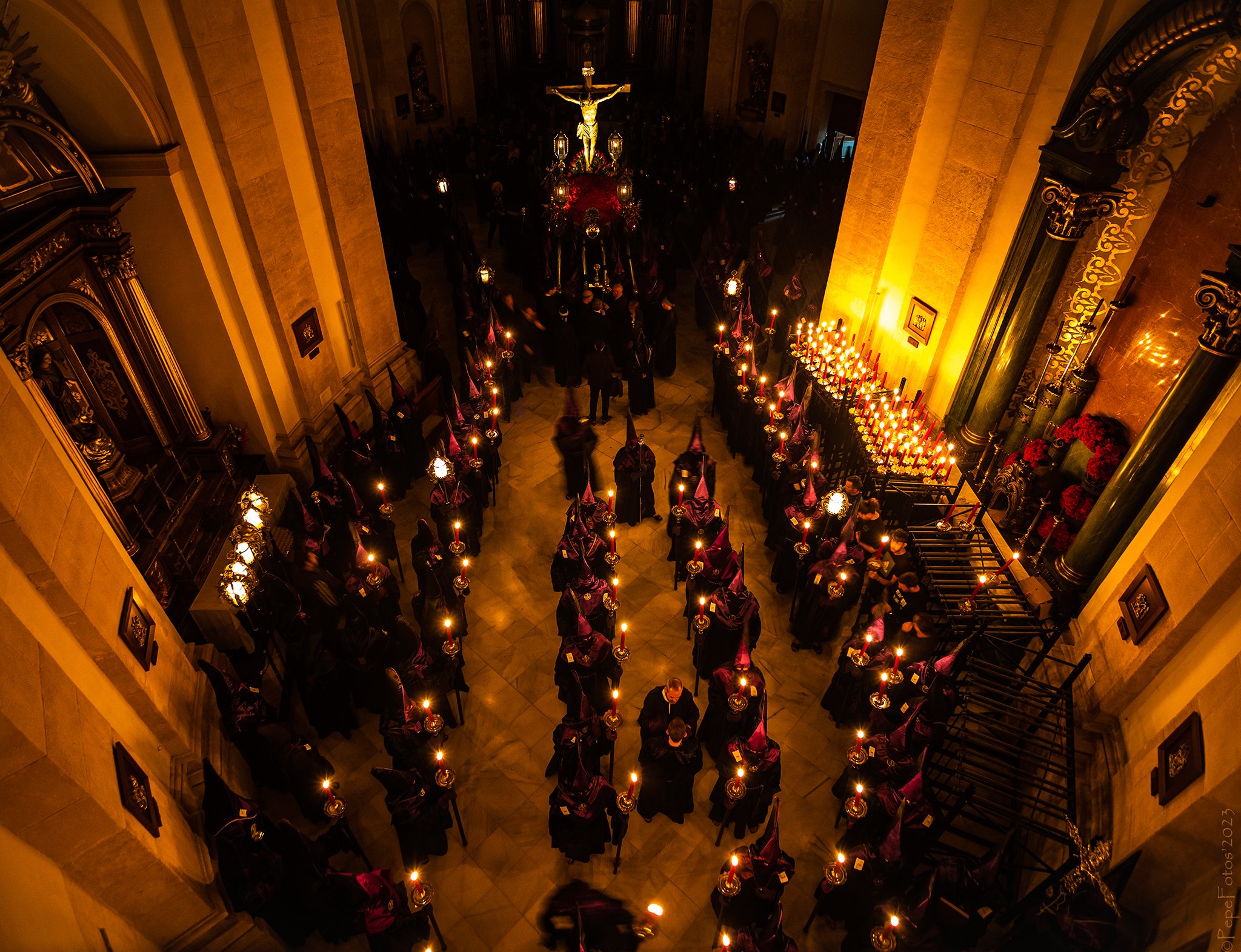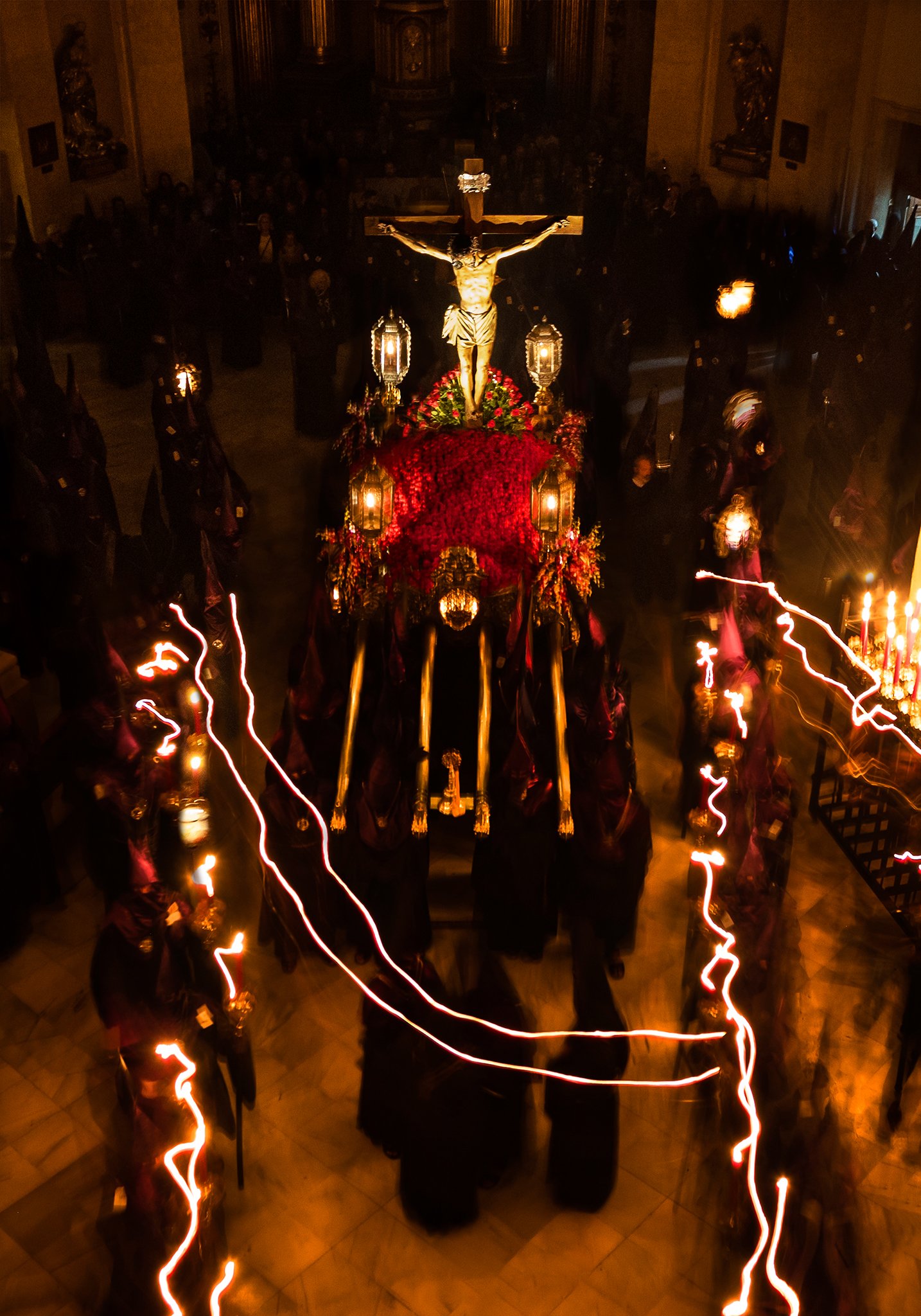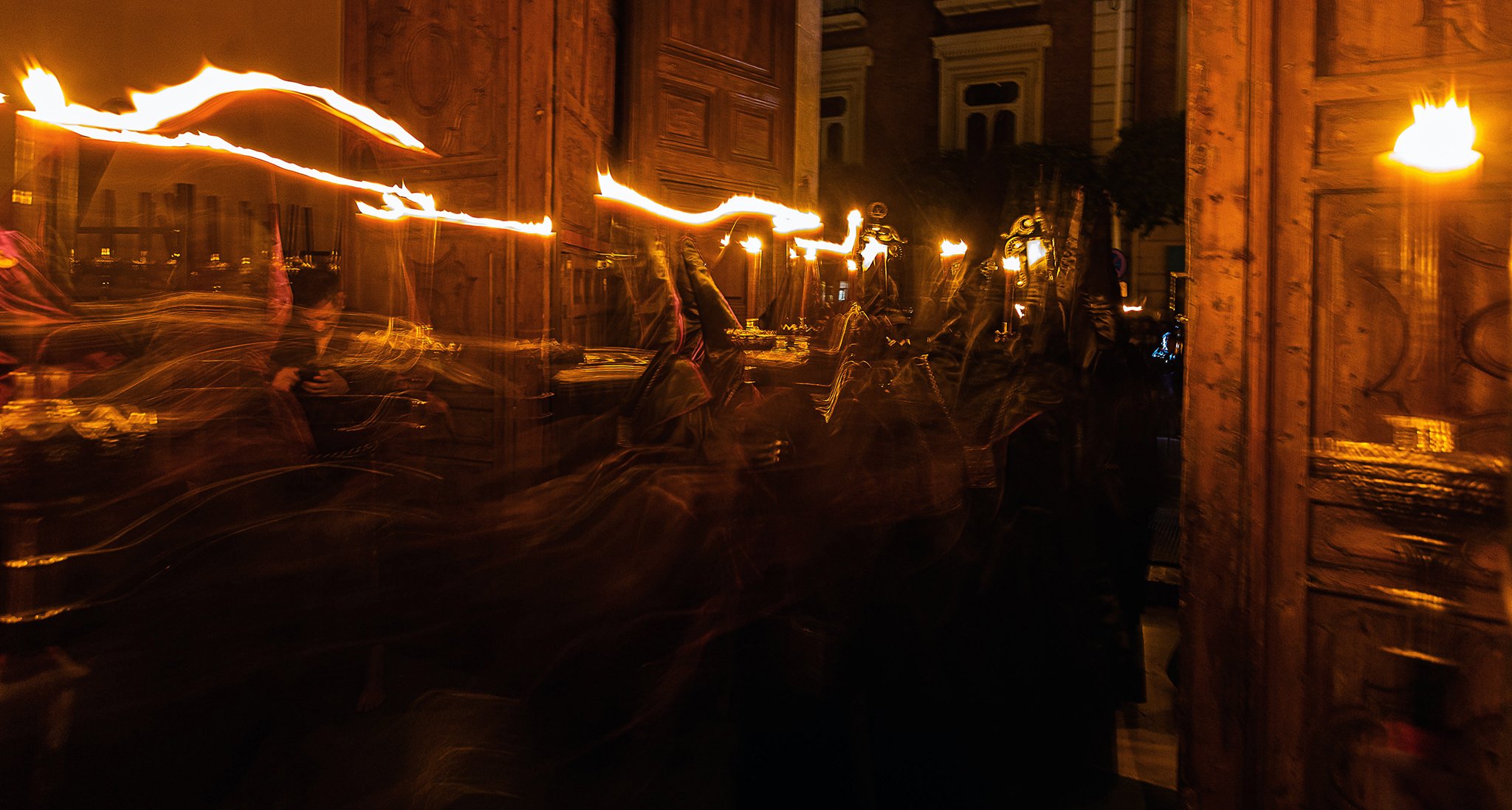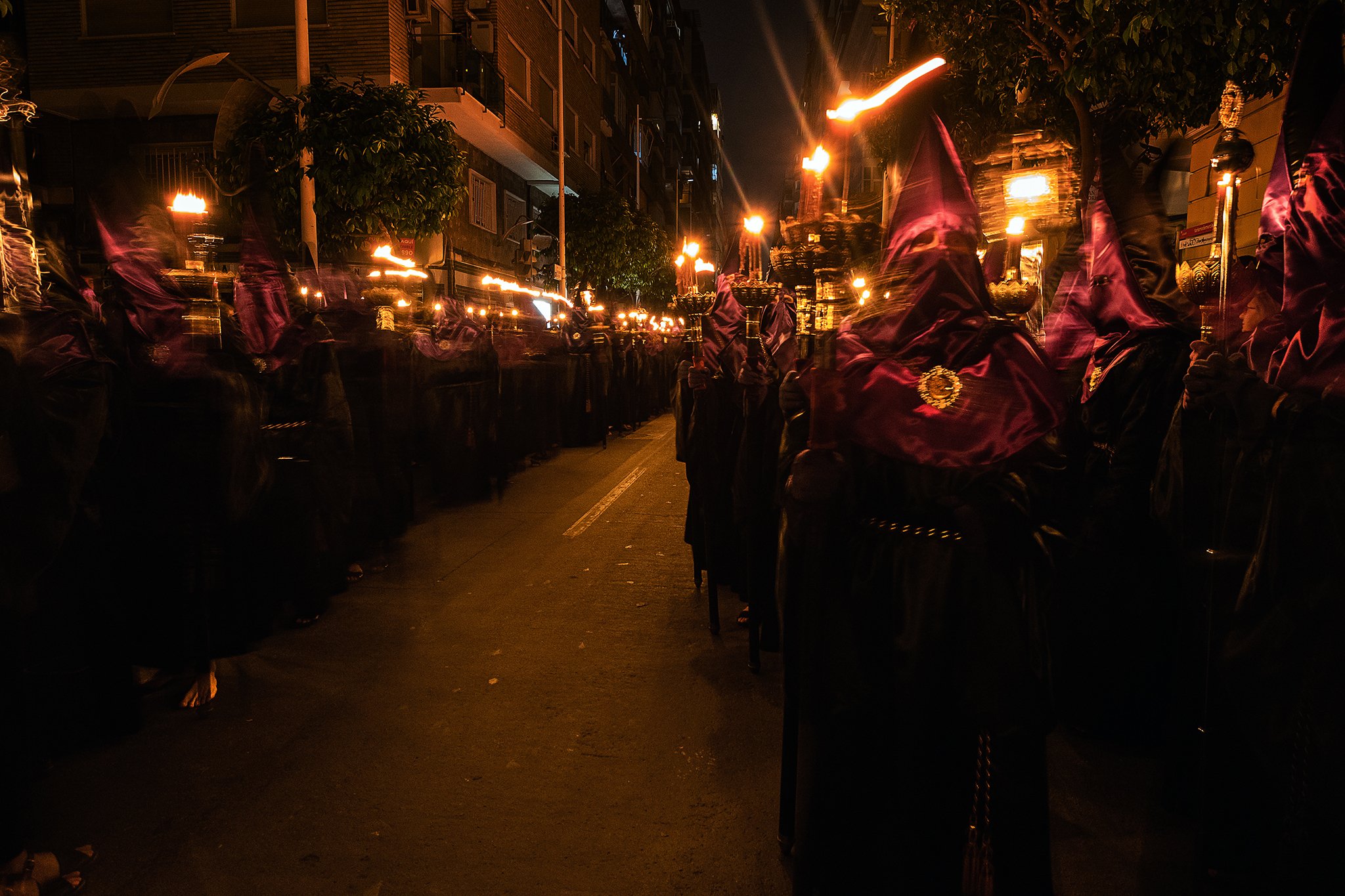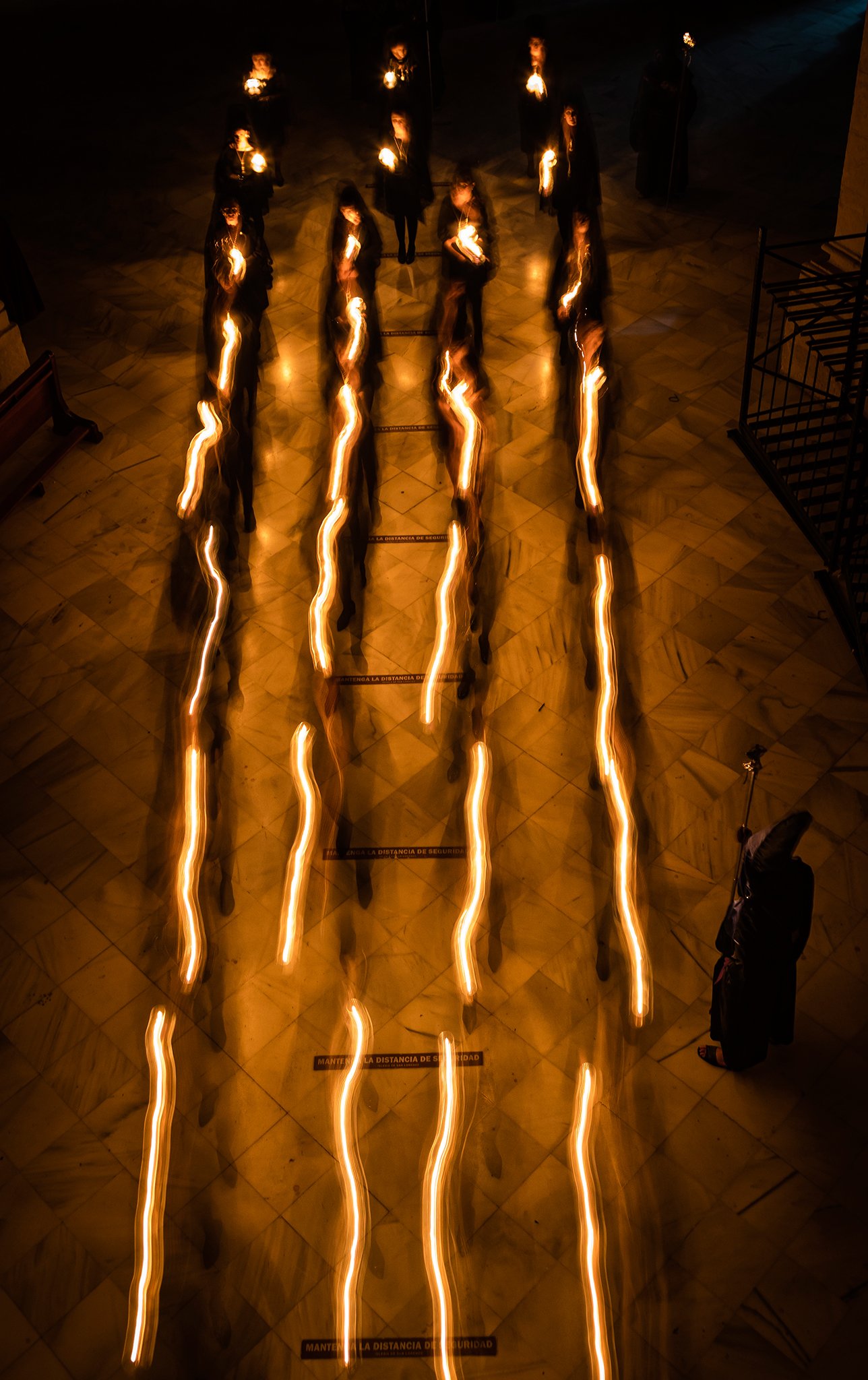The atmosphere of solemnity and mystery in the night processions of Holy Week of Murcia, Spain by Pepe Álvarez-Rogel
More than a decade ago, during a conversation with a colleague from the photographic association Punto de Enfoque (Focus Point, in English), I remember my response to his attempt to elucidate the charm of photographing processions from Holy Week: "Processions bore me and I am not religious in the slightest". Today, while my perspective has remained largely unchanged, I've come to appreciate the significant distinction between merely observing a procession from the sidelines and the excitement of actively documenting it from within. Thus, year after year, I find myself drawn to the processions, immersing myself among Nazarenes and “pasos” (a type of floats with sculptures that depict different scenes from the gospels) for hours and hours, trying to capture their essence through the lens of my camera. Why? The answer to this question eludes me still.
Perhaps it's the evocative medieval ambience that permeates these events, particularly at nightfall when the flickering candles cast haunting shadows, and the interplay of lights engenders captivating silhouettes. Perhaps it could be the opportunity to create a form of "photoreportage" and the exploration of alternative facets of "street photography". Whatever the inexplicable allure, it persists, weaving an enigmatic thread between my aversion and fascination, prompting the accumulation of thousands of photographs immortalizing the processions.
Spain is renowned for its Catholic traditions observed during Holy Week. Across the country, hundreds of processions featuring thousands of Nazarenes traverse the streets of numerous cities, towns, and villages for a duration spanning 7 to 10 days annually. Simultaneously, millions of spectators, Spanish and foreign, eagerly await in the streets or before their TV screens to witness the solemn spectacle of the processions. Each individual, whether a Nazarene or not, is driven by their own array of motivations, be they religious, rooted in family traditions, cultural affiliations, and more. Together, these diverse motivations coalesce to form a vivid tapestry that epitomizes a way of life, if only, for many people, for a brief period each year.
Today, I present to you evocative imagery captured during two nocturnal processions within the Region of Murcia (located in Southeast Spain). Both unfold under the shroud of night, enveloped in an aura of silence and darkness.
The first procession transpires in the town of Jumilla since 1971 during early morning transitioning from Holy Tuesday to Wednesday. Here, penitents, akin to ethereal specters, traverse the darkness for approximately four hours, burdened by the weight of their heavy chains during the Penitential Procession of the Christ of Life, known as Procession of the Penitents. The sole sources of illumination amidst the nocturnal gloom are the flickering candles clasped in their hands and the sporadic bonfires dotting the labyrinthine streets. Furthermore, a group of men and a group of women laboriously shoulder the weight of two imposing “pasos” through steep streets, many of them ultimately succumbing to exhaustion. Meanwhile, a hushed audience watches in reverent silence pierced only by the pounding drums.
During the second procession I show, the revered image of the Christ of the Refuge is solemnly borne by devoted Nazarenes through the streets of Murcia City on the night of Holy Thursday, a tradition faithfully upheld since the year 1943. The Nazarenes are wrapped in a sacred vow of silence from the moment they cover their faces until their return home, a silence only broken by the choirs singing hymns in the streets as the Christ passes by. Among the procession's poignant tapestry, the presence of the "manolas," elegantly attired women bedecked in mourning black with intricate mantillas (long lace veils), adds an ineffable essence, evoking timeless reverence. The meticulous preparation of the Nazarenes and “manolas” in the church before taking to the streets unfolds as a profoundly moving spectacle, suffused with solemnity.
Whether devout or not, I extend an invitation to all to join us and immerse yourselves in the solemn and mysterious atmosphere of these processions. It promises to be an overwhelming experience, and perhaps, like myself, you may find yourself captivated by their allure, returning year after year.
Spanish, born in Madrid in 1966, I have lived in Murcia for 50 years. In my professional life I am a full professor and scientific researcher in environmental soil science at the university.
Photography is my main hobby. I am a member of the Asociación Punto de Enfoque where I have been sharing experiences, learning and friendship with other photographers for more than 15 years. I am currently part of the team of editors of the photography magazine SYMART. I am attracted to almost anything that can be photographed, but my main interest is in showing how we are and how we behave as people and what we do. I love to travel and to take photos everywhere I go. My references are photographers like Henri Cartier-Bresson, Garry Winogrand, Robert Doisneau, Elliott Erwitt, Vivian Maier, and Spaniards like Francesc Català-Roca, Cristina García Rodero, Ramon Massats or Joan Colom.
